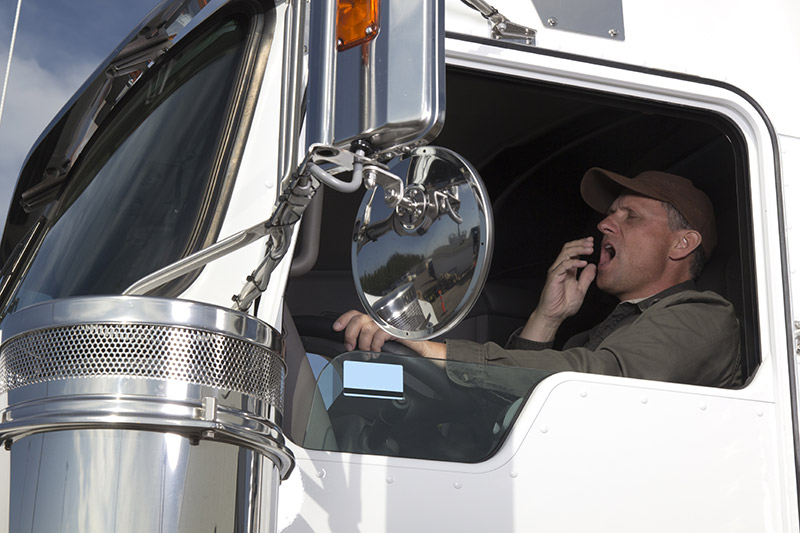Riskiest days and roads for North American truck drivers revealed
Nov 04, 2018 in NewsLytx Inc. shared insights and trends about safety in the trucking industry based on 100 billion miles of driving data captured by its onboard recorders.
Lytx is a provider of video telematics, analytics and safety solutions; you might know them better by the DriveCam name of their in-cab camera safety and coaching offering.  The insights come from analyzing the data in Lytx's trucking-industry client database. The data is anonymized, normalized and generalizable to the trucking industry as a whole. (For ATA, this focused on over-the-road fleets, not vocational fleets, delivery fleets, etc.)
The insights come from analyzing the data in Lytx's trucking-industry client database. The data is anonymized, normalized and generalizable to the trucking industry as a whole. (For ATA, this focused on over-the-road fleets, not vocational fleets, delivery fleets, etc.)
The provider of the DriveCam program addressed safety factors such as the times and places when risky driving and collisions tend to be most common during its “state of the data” presentation on Oct. 28 at American Trucking Associations’ Management Conference & Exhibition. So, according to them, you may wish to pay extra attention if you happen to be on the road on a Wednesday or driving any day between the hours of 11 p.m. and 5 .m. And, be careful if your travels take you through the areas around Allentown and Harrisburg, Pennsylvania.
Riskiest times and days
The data shows the top riskiest days of the week and times of day for North American truck drivers between January and September 2018 were:
- Day of the week with most collisions: Wednesday (peak between 2:00 - 4:00 a.m.)
- Time of day with most collisions: Overnight (11:00 p.m. - 5:00 a.m.)
- Day of week with most near collisions: Friday
- Time of day with most near collisions: Afternoon (1:00 p.m. -5:00 p.m.)
- Day of week with least collisions: Monday
Ryan Brandos, the Lytx data analyst, who presented the findings at ATA MC&E, noticed that the risk for the truck drivers tend to rise as the work week progresses. “There is a distinct difference between collision and near-collision trends," he explained. “Collisions occur more frequently at night. We see those same drivers avoid contact during the afternoon hours, resulting in more near collisions during the day.”
Riskiest roads

According to Lytx’s data, the fop five riskiest stretches of road in North America for truck drivers this year through September were:
- Pennsylvania Rt. 309 near Vera Cruz Road, Upper Saucon Township south of Allentown;
- Pennsylvania Rt. 309 near W. Emmaus Avenue, Allentown, southeast of Queen City Municipal Airport;
- Pennsylvania Rt. 181 near Crooked Hill Road, Susquehanna Township east of Harrisburg Area Community College;
- Tennessee Interstate 40 near Green Hill Road, Dandridge, east of Knoxville;
- Tennessee Interstate 24 near Belvoir Avenue, Chattanooga, southwest of Chattanooga Metropolitan Airport.
According to Lytx, “These five road segments are 172 times riskier on average than the rest of Lytx’s trucking-industry footprint, based on Lytx’s proprietary risk score system. Four out of the five segments are near interchanges and the other is near an exit/on ramp, which are areas of high driver volatility. Rapid changes in driving speed and sudden lane changes to make exits/connections not only lead to more triggered events but also amplify the risk posed by risky driving behaviors, as these volatile areas necessitate a greater amount of proactive and reactive driving.”
 Riskiest behaviors
Riskiest behaviors
With exponentially more human-reviewed data than any other video telematics provider, Lytx is able to identify real correlations between specific risky driving behaviors and the likelihood of those behaviors resulting in a collision. Here are the top ten driving behaviors correlated to a driver experiencing a collision in the next 90 days:
- Collision
- Blank stare
- Drowsy driving
- Driver not wearing seatbelt
- Late response
- Failed to keep an out (the driver cut it unnecessarily close to another vehicle, person or object)
- Near collision
- Near collision (unavoidable)
- Aggressive driving
- Falling asleep
“Insight into the relationship between risky driving behaviors and getting into a collision are invaluable for the trucking industry to consider as they prioritize and focus coaching efforts on the behaviors that will have the most impact in reducing collisions and improving overall safety within their fleet,” said Del Lisk, Vice President of Safety Services at Lytx.
So, how about that insurance?



